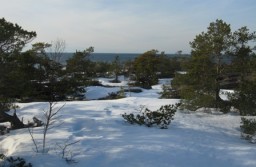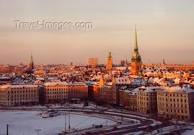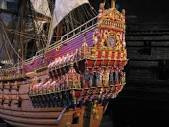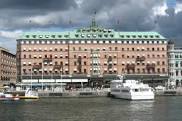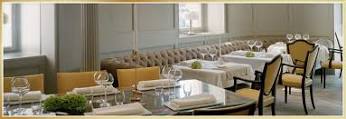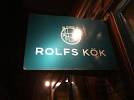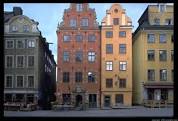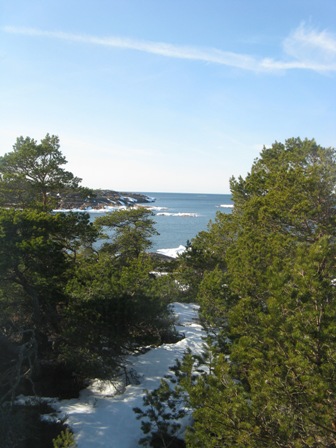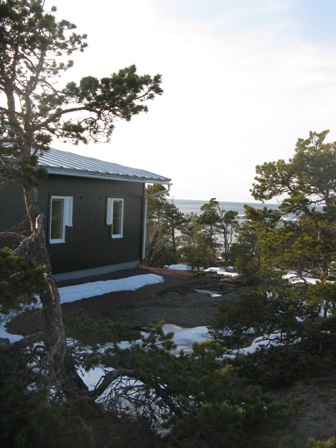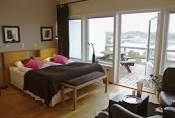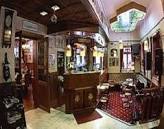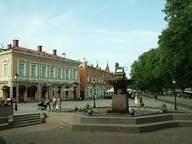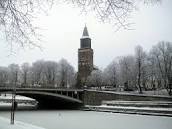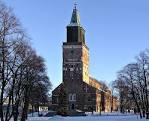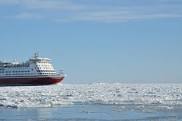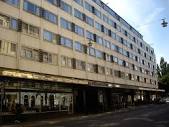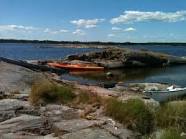How to travel haphazardly from Stockholm to Turku during late winter in a few days? Try this itinerary for something different.
Stockholm:
Early Scandinavians were amongst the world’s most intrepid navigators. A visit to any one of Scandinavia’s capital cities will include an experience connected to water; it’s inevitable as the contemporary link to a seafaring past is enduring. One doesn’t exist without the other.
Stockholm is no exception of course. Its harbour is one of Europe’s loveliest and the city embraces the surrounding water to maximum benefit. A graceful metropolis and small scale despite the fact it’s Scandinavia’s largest.
Minimising my use of public transport, I decided to walk nearly everywhere in an attempt to see more from the pedestrian’s view, usually from one museum or cafe or restaurant to another in an effort to keep warm.
Stockholm’s most important museums are centrally located, all within easy walking distance to one another so running between sights was minimal. I rocked up at each museum glowing, slightly breathless but comfortably thawed.
I’d heard about the Vasa Museum but I wasn’t prepared for such a surprise. It’s magnificent. I happily spent a whole day there fascinated by this great ship that never really went anywhere and was lost to time as the centuries passed. (See www.vasamuseet.se)
The Vasa is the only early 17th century ship ever to have been fully restored. With over 95% of the original timber still intact with recreated painted decorations looking as they did the day it launched, it’s like viewing living history. Designed by a Dutch master shipwright to act as Swedish king Gustav 2 Adolf’s flagship, the Vasa (the king’s family name) was intended to frighten opponents, in this instance the Poles for domination of the Baltic Sea.
But it was overmanned and over supplied with heavy cannons. The Vasa sank on its maiden voyage in 1628 about 1.2 kilometres (in the middle of Stockholm’s harbour) from where it was launched, an ignominious end to an embarrassingly short career.
After early efforts to salvage the sunken Vasa, within two centuries, the great ship was more or less lost in the depths of memory. Contemporary search methods helped to ‘rediscover’ the Vasa in the early 1950s. The ship was raised in 1961, its first time above the water line in 333 years.
Restoration took decades of painstaking work. The Vasa Museum opened in 1990. By 2004 a new climate control system was installed throughout the museum to stabilise temperature and humidity to protect the Vasa’s precious integrity.
Seeing the Vasa in its new home is humbling. How can it be otherwise? The beautiful ship can be witnessed as an example of supreme craftsmanship or simply as human folly.
They built something too big and overloaded it. Then it sank. Dozens of people drowned. A vast sum of money was wasted. The Swedish king took a huge hit to his prestige as did the Swedish navy.
Wandering the galleries surrounding the ship, I pondered all these facts but my thoughts were interrupted by two young men also discussing the sad fate of the Vasa. ‘It reminds me of Pirates of the Caribbean,’ said one. ‘Yeah, I can see Johnny Depp on the deck,’ added the other.
A curious fact about humanity: Everyone attempts to create a relative understanding to the extent of their knowledge and experience, in this instance a film series about cartoon pirates to a unique ship whose history is absolutely remarkable. So I was brought back to the present moment, a harsh reality. Two dunderheads making loud inane comments caused me to remember how something as grandiose and ill-conceived as the Vasa could have been built. Stupid human pride knows no boundaries does it?
This also reminded me why so many people visit somewhere and immediately make comparisons to what they already know, always looking for a link to what is familiar rather than just enjoying the difference for the sake of difference. ‘Those mountains look just like the ones near our place.’ ‘We’ve got the same stuff at home.’ ‘Why did I come all this way just to see what I see from my front window?’ All phrases I’ve overheard time and again. The repetition makes me sad.
Sadness appears inherent in Scandinavian psyche. Is there a more introspective, sensitive and aloof peoples on Earth?
While Swedes are notoriously depressive personality types, they’re also well recognised for letting their hair down when good food and strong drink are involved.
A trick of the travel trade I regularly put to effective use is to dine at a new city’s most innovative and best restaurant soon as possible, the first night in town if available. I did just this in Stockholm at Mathias Dahlgren’s eponymous restaurant in the posh Grand Hotel.
The food was divine of course. Two Michelin stars still occasionally mean something worth noting. Dahlgren’s food delivers cutting-edge Scandinavian cuisine along the lines of Rene Redzepi’s Noma in Copenhagen, if toned down somewhat to satisfy an average Swede’s natural tendency to conservatism. (See www.mathiasdahlgren.com)
Typically for such a respected restaurant, the waiters were excellent and well-informed. What I’ve learned is to ask the most tuned-in waiter where he or she eats on a night off. Invariably I’m supplied with a short list of a city’s most interesting and un-touristy restaurants/diners and an offer to make a booking on the spot for any subsequent nights I wish.
This is how I found Rolf’s Kok (Rolf’s Kitchen) in central Stockholm. Not as fancy or expensive (not by a long shot) as Mathias Dahlgren but the food was just as good, the service just as friendly and I enjoyed the whole experience even more. (See www.rolfskok.se)
My time in Stockholm was running short. I needed to get to Turku in Finland and then Helsinki to catch a flight onwards. I’d manage to walk the old town, Gamla Stan, from end to end without freezing to death. I’d visited the Royal Palace, the Swedish Economics Museum and the National Museum and I’d learned to use the underground metro trains without getting completely lost.
But the Baltic Sea was still icy. I wondered if I could ferry across it to Turku.
Aland:
‘Aland, where’s that?’ I ask. ‘An island between Sweden and Finland,’ I’m told by a Swedish tourism bureaucrat while discussing how I’ll travel between the two countries by boat during late winter. She raises her eyebrows at me as if to say, ‘Don’t you know anything?’
Admittedly, I knew next to nothing about Aland and its tiny capital town, Mariehamn, supposedly named after a Russian empress who liked the place so much her husband named the town after her in celebration of her fondness for its location. Later I discovered that wasn’t true.
What is true is that Aland is actually the name for the archipelago comprising some 6,550 tiny islands (many just rocky dots on a map called ‘skerries’) where over 90% of the 28,300 permanent inhabitants live on Fasta Aland (which means ‘Main Island’) where about 90% of those live in the island’s only sizable town, Mariehamn.
Aland’s name refers to the main island as well as the rest of the archipelago, which is governed by Finland (though it has autonomous status) and where the people speak Swedish.
Confused? I was.
As I learned more about this in-between island called island, I became increasingly interested.
In my opinion, any in-between place which is part of one country but doesn’t share that country’s language and which has gained semi-independence over the years because of demilitarisation and which now belongs essentially to no single country but is governed by its inhabitants in a quasi autonomous state has a lot to like about it.
Aland is close enough to Stockholm’s important harbour, Finland’s mainland and Russian/Prussian historic battles for domination over the Baltic Sea to have been hard fought over. Strategically, Aland is right in the middle of an old war zone. It was affirmed autonomy by the League of Nations in 1921 and effectively demilitarised shortly thereafter.
And I like the repetitive name: Aland (Island) Island. The root of the name Aland comes from Proto-Norse (Ahvaland) and means ‘Land of Water’.
Aland popped up from the shallow Gulf of Bothnia some 10,000 years ago, the blink of an eye geologically speaking. Fasta Aland is the biggest island in the group, granite in its northern reaches and alluvial sedimentary soil in the south where a bit of rich farming is worked on boggy land. The highest point in all of Aland, also on Fasta Aland, is Orrdals Hill which rises up 129 metres. These are low islands that hug the sea’s horizon, ‘Land of Water’ indeed.
Mariehamn is a tidy town inhabited by comfortably well off residents. You know you’re in wintry Scandinavia when you’re surrounded by folk dressed snugly in goose down coats, fashionable boots and fur hats all looking very self-contained and disdainful as they march unsmilingly to business. Gross annual domestic product on Aland averages at about USD$56,000 per capita, so there’s money to be had in these islands.
You need money to live comfortably here. Goods and services on Aland average roughly 20% more expensive than mainland Sweden, which is already one of the world’s most expensive countries for travellers. Aland is a pricy place. No wonder everyone looks so smug.
Incomes are derived from tourism, shipping and retail profits from VAT free alcohol sales. The Viking Line ferry I was aboard, The Isabella, did a roaring trade in duty-free alcohol sales, the primary reason most of its passengers were travelling between Stockholm and Turku. Almost no one disembarked in Mariehamn. The majority of passengers remained on board ship to do their regular tax-free shopping.
Mariehamn was granted its name in 1861 by Tsar Alexander 2 in honour of his Tsarina. I’ve read that Maria Alexandrovna liked the location. I’ve also read that she never visited the place.
At any rate, the town was planned in Russian style with long boulevards and a waterside esplanade linking the two harbours that sideline the isthmus town’s borders. Streets in between follow a rigid grid pattern, perfect for funneling icy winds blowing straight down from the Arctic.
Mariehamn has a small history museum and art gallery that is worth exploring. I spent a couple hours there while idling around town. Admittedly I was the only idler to be seen. Winter is very low season on Aland. The town’s maritime museum is also interesting to gain an understanding of Aland’s quirky political history. The 19th century preserved sailing barque, ‘The Pommern’ is nearby and is also worth a look, particularly if you’re a sailor or nautical history buff. (See www.visitaland.com for details on the museums and hotel/restaurant recommendations.)
The town’s hotels looked very dour and resolutely unfriendly. According to the exceptionally helpful tourism bureaucrat I spoke with (desperately seeking advice as I’d made no plans and booked no hotel or restaurant), most of the town’s hotels open in winter were overpriced when Euros were measured against value. ‘So where do you recommend to stay,’ I ask?
‘There’s a place on the other side of the island that I recommend,’ she replied.
‘How do I get there?’
‘You go by taxi, there’s one still operating today, I’ll call him for you.’
Within fifteen minutes my bag is in the back seat and I’m driving through spruce forest, around ice cloaked lakes and picturesque little farms.
The driver says, ‘We have to watch for moose, but I don’t get many calls to go there in winter,’ he says, indicating how remote the other side of the island is and how rarely he ventures there. ‘They wander out of the forest at this time of year looking for food.’
I’m surprised moose live on Aland; it’s a long way from the mainland after all. ‘They walked here across the ice,’ he adds just as I was about to ask how moose came to be living on Aland.
I like this taxi driver. He’s friendly and exchanges information about his island home willingly.
‘The hotel you’re going to is supposed to be nice.’
‘You don’t know it,’ I ask?
‘I’ve never stayed there but people seem to like it.’
My one night on Aland takes a turn for the better. I’m not staying in austere and unfriendly appearing Mariehamn. Instead I’m on an adventure and staying at the only hotel on the far-flung northern side of the island thirty-seven kilometres from downtown Mariehamn.
As it happened, I’m glad I did. The Havs Vidden hotel occupies its own little peninsula overlooking the Bothnian Gulf. It’s small, exclusive and surprisingly connected to the whole world considering what I’d been led to believe by the taxi driver and Mariehamn tourist bureaucrats. I was half expecting to sleep in an igloo decked out with furs. Instead the hotel is all Scandinavian Contemporary design, lots of polished wood, fine fittings and simple style. (See www.havsvidden.com)
The Japanese and Scandinavians have a lot in common regards hotel room design. Form follows function is the rule. Authenticity is the modus operandi. Nothing is out of place or superfluous or sharp. Colour comes from outside, from the woods, water and sky. My room is wooden beige and I like the way it forces me to look out rather than in.
The Scandinavians have an ingrained affinity with nature. Their art and music is connected to it. To listen to a Sibelius symphony is to listen to the sounds of nature, birds whistling overhead, tree boughs cracking with ice, waves lapping against shoreline. You hear the picture.
My room is a cabin set in a patch of forest overlooking ice, snow and water. I’m all alone and I see no moose.
In this location, where nothing else is around, I’m lucky the hotel chef’s cooking is delicious. I’m seated at my table by a lovely waitress who calls me by name. Offered an aperitif, subsequently told I’m to be served a three-course dinner. She sets the printed menu before me and asks if I can eat everything. ‘I think so, I’m hungry,’ I reply. ‘No, I mean have you allergies,’ she asks? ‘Only to bad food,’ which is my standard reply and one she understands.
I drank most of a bottle of Rioja while trying to enjoy my dinner in relative peace. (The owners are in residence, taking their dinner at a table near mine. They have a child who screams during most of the evening. The father cuddles the child but no one has the sense to remove it from the dining room so other guests can eat in peace.) After dinner I nursed a brandy in the lobby area near an open fire to contemplate life, liberty and the pursuit of demilitarisation far away from the loud spoiled child who should have been served a bowl of pasta in the kitchen out of earshot. Fortunately, the child’s shrieking didn’t negatively influence how I ultimately felt about the hotel.
Earlier I’d had a swim in the hotel’s indoor pool located in a spacious heated room with floor to ceiling windows overlooking the sea. I then sat in the sauna alone for a while, had a cold shower, dressed quickly and ran back across the snow and ice to my cabin and dressed for dinner. I slid-slipped across glistening ice covered wooden pathways to the candlelit dining room in the main building which serves as bar, reception and dining room, where I ate well, wrote notes and read my book.
This was one of those nights when I felt all had gone my way, despite one screaming kid. I’d spent my inheritance on the taxi to nowhere and on one night at the hotel on the edge of beyond just to feel truly far and away on Island Island Aland. I couldn’t have been happier, though the taxi fare back to Mariehamn the next morning was a reality shock.
Turku:
Following the one night on otherworldly Aland, by mid-afternoon I boarded another hardy Viking Line ice-breaking ferry to continue the passage across the lower Gulf of Bothnia to Turku, Finland’s old port, its former window on the world.
Previous visits to Finland prepared me for Finnish strangeness. For instance, Finns drink more milk per capita than any other nation, a curious fact. I’ve yet to discover why this is so. Finns love nothing more than to conduct business while slow roasting themselves nude in tiny wooden saunas. This I understand. Finland in winter is bleak and frigid. To sit naked in a hot box on a frigid winter’s day or night feels good. Finns are notorious for their truly ironic senses of humour. (What’s a Finnish joke? I don’t know, what’s a joke? Get it?) The language is of Finno-Ugraic origin, akin to Basque and Hungarian and therefore incomprehensible to linguistically challenged Romance Language speakers like me.
Finnish history is one of stalwart resistance to larger powers determined to put them out of existence i.e. Russia and Sweden. I admire the fact that Finland has survived intact past the 20th century. Finnish diplomacy has always metaphorically walked a tightrope of manipulation, acquiescence and courage under fire.
Finns make the Swedes look almost affable by comparison. Getting a Finn to crack a smile either requires a lot of booze or an innate comic ability akin to evincing a laugh at a North Korean Security Council meeting. Alcohol sold in Finland is horrendously expensive (when not bought VAT free in Aland) so coercing an unprompted laugh from a Finn can be a pricy undertaking.
Perhaps I’m being unfair. Many Finns I’ve met are warm souls keen to interact with strangers. Maybe I’m passing on stereotyped impressions?
I stayed at the Park Hotel in Turku, a small-sized boutique hotel near the old cathedral and central to the old city centre. I liked the Park Hotel. (See www.parkhotelturku.fi) My room was small but cozy. I felt welcomed by all the hotel employees as an esteemed guest and not as a tax invoice.
Run by a local family, the mistress of the house gave me invaluable advice on where to dine during my one night in Turku, which is how I found the Rocca restaurant and where I enjoyed as fine a dinner as I had at vastly more expensive restaurants in Stockholm and Oslo. (See www.rocca.fi)
I really came to Turku to visit the Sibelius Museum. The great composer Jean Sibelius never lived in Turku (you can visit his home ‘Ainola’ outside Helsinki) but he did have a profound affect on the Turku Music Conservatorium which was instrumental in setting up the museum to the Finnish musical hero. (See www.abo.fi/fak/hf/musik/eng/museum/valkommen)
My visit to the Sibelius Museum was wonderful. I paid my 3 Euro entrance fee and chatted amiably to the young man who was running the reception desk. ‘You’re the only visitor,’ he informed me. ‘Do you want to hear anything in particular?’
‘What do you mean,’ I asked?
‘I can play on the loudspeaker system whatever you want to hear.’
Being the only visitor has its privileges obviously.
‘Okay, how about some of his more obscure violin pieces?’
‘Sure, I’ll put some on now,’ which is how it came to pass that I enjoyed the unique pleasure of having the Sibelius Museum all to myself while I wandered its galleries and displays filled with the master composer’s instruments and copies of his scores all the while accompanied by a personalised soundtrack.
The greatest cathedral in all Finland is only 150 metres walk from the Sibelius Museum. For an hour, I sat alone in a back pew watching the late winter’s light play shadow tricks on stained glass windows while humming Sibelius tunes to myself.
Later that same day I caught a fast train to Helsinki then a bus connection to its airport, allowing plenty of time for rumination on how travelling in Scandinavia during late winter is rather a lovely thing to do.
Tom Neal Tacker visited Stockholm with assistance from Stockholm’s Tourist Authority.
Naked Routes:
The Viking Line ferries travel daily throughout the year (weather conditions permitting) between Stockholm and Turku with stops at Mariehamn. The trip takes approximately 12 hours, can be broken in half with an overnight stay in Mariehamn and is very scenic. The ship passes through Stockholm’s inner archipelago, its small forested islands sporting the favoured summer homes of the city’s elite. See www.vikingline.com
Naked Sleeps:
Stockholm’s First Hotel Amaranten is a centrally located modern hotel with about as much style as a Greyhound Bus Terminus. My key card opened a room that was already occupied. Open bags were on the bed and a make-up case was in the bathroom. Luckily the guest was not. Back at reception, I handed over the key card and said, ‘You’ve assigned me an occupied room.’ ‘No I haven’t,’ was the curt reply. The receptionist offered no immediate apology and tried to blame me for entering a room that was not mine. Alarmed at the obvious security risk the mistake clearly posed I repeated, ‘You’ve given me a room with someone already in it!’ She checked her computer records and said, ‘You’re correct. I’ll give you another room.’ Still no apology was offered. ‘I’ll upgrade you to another room.’ When I opened the door to the new room it was the same standard size and look as the one I’d be given before which was already occupied. I decided not to pursue the matter further. Sometimes it’s useless to fight a battle that’s already been lost. See www.firsthotels.com
Naked Tips:
Local resident adventure specialist Tomas Bergenfeldt runs a company aptly called Stockholm Adventures specialising in hiking, cycling and kayaking tours around Stockholm’s richly forested hinterland and idyllic inner archipelago. Had I visited Stockholm in spring, summer or autumn instead of winter, I would gladly have spent a couple days seeing Stockholm’s natural wonders from a bicycle or kayak seat as well as on foot. See www.stockholmadventures.com
For more information about Stockholm’s many attractions, museums, special exhibitions, concerts, public transport and tickets, see www.visitstockholm.com
For more information about what to do and see in Turku, see www.visitturku.fi

